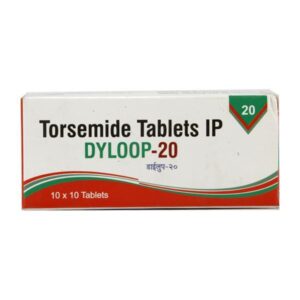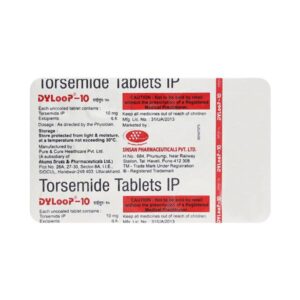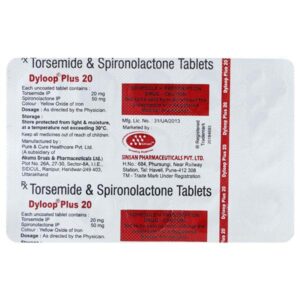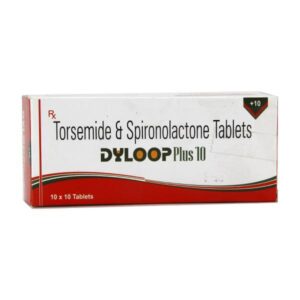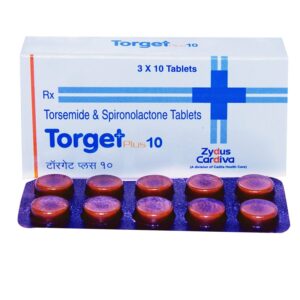SPIRONOLACTONE + TORASEMIDE
Spironolactone: Spironolactone is a medication commonly used to treat conditions such as hypertension (high blood pressure), congestive heart failure, and fluid retention (edema) caused by various health conditions. It belongs to a class of drugs known as aldosterone antagonists or potassium-sparing diuretics.
The mechanism of action of spironolactone is primarily related to its ability to block the effects of aldosterone in the kidneys. Aldosterone is a hormone that regulates the balance of water and electrolytes in the body. By blocking aldosterone, spironolactone helps the body to excrete excess fluid and sodium while conserving potassium. This action helps reduce fluid retention and lower blood pressure.
The recommended dosage of spironolactone varies depending on the condition being treated. For hypertension, the usual starting dose is 25-50 mg once daily, which can be increased up to 100 mg daily if necessary. For edema, the initial dose is typically 100 mg daily, but higher doses may be required. It is important to follow the dosage instructions provided by a healthcare professional.
While spironolactone is generally well-tolerated, it may cause some side effects. Common side effects include dizziness, headache, nausea, stomach upset, and increased urination. It can also cause breast tenderness or enlargement in both males and females. Rare but potentially serious side effects may include high potassium levels, electrolyte imbalance, allergic reactions, and changes in kidney function. It is important to notify a healthcare provider if any concerning symptoms occur while taking spironolactone.
It’s worth noting that spironolactone is also sometimes used as an off-label treatment for hormonal acne in females. In this case, it is usually prescribed at a lower dose and for a shorter duration. If considering spironolactone for acne treatment, it is crucial to discuss it with a dermatologist, as they can provide guidance on its appropriateness, dosage, and monitoring.
Torasemide: Torasemide is a medication that belongs to the class of loop diuretics. It is primarily used to treat edema (fluid retention) associated with various conditions such as congestive heart failure, liver cirrhosis, or renal disease.
The mechanism of action of Torasemide involves inhibiting the sodium-potassium-chloride co-transporter in the loop of Henle in the kidneys. By doing so, it increases the excretion of sodium and water, leading to diuresis (increased urine production) and subsequent reduction in fluid volume.
The dose of Torasemide may vary depending on the individual’s condition, age, and kidney function. The usual recommended starting dose for edema in adults is 5-10 mg per day, which may be increased up to 40 mg per day if necessary. However, the exact dosage should be determined by a healthcare professional.
Like any medication, Torasemide can cause side effects. Common side effects may include increased urination, dizziness, headache, low blood pressure, electrolyte imbalances (such as low potassium levels), and gastrointestinal symptoms like nausea or diarrhea. Rare but potentially severe side effects may include allergic reactions, severe skin reactions, liver or kidney damage, or hearing loss.
It is important to note that Torasemide should be used with caution in patients with certain conditions, such as severe kidney disease, electrolyte imbalances, gout, or diabetes. It may also interact with other medications, so it is crucial to inform your healthcare provider about any other drugs you are taking.
Overall, Torasemide is an effective diuretic used to treat fluid retention associated with various conditions. The medication works by increasing urine production and excretion of excess water and sodium. However, it is essential to use it under medical supervision and report any concerning side effects to your healthcare provider.

